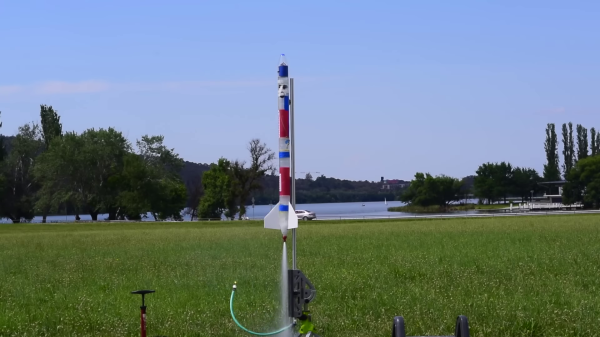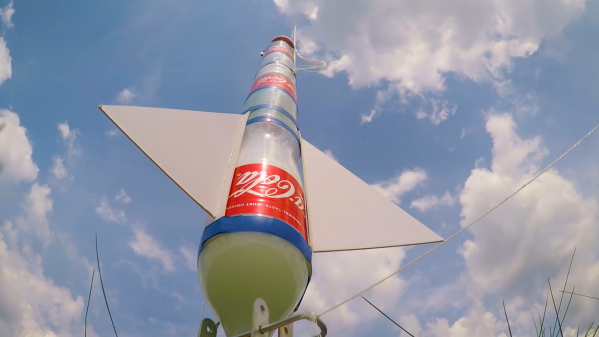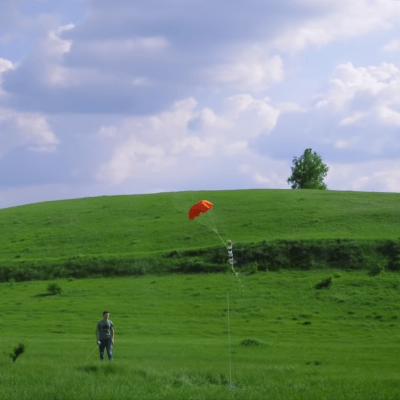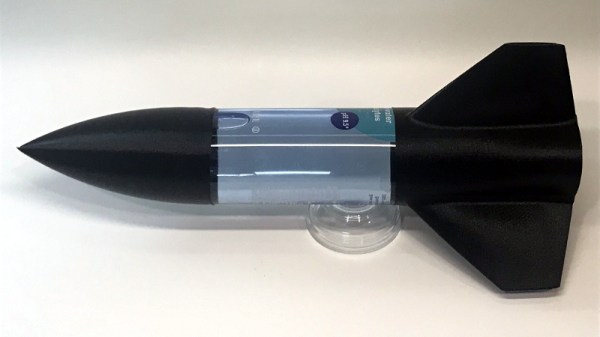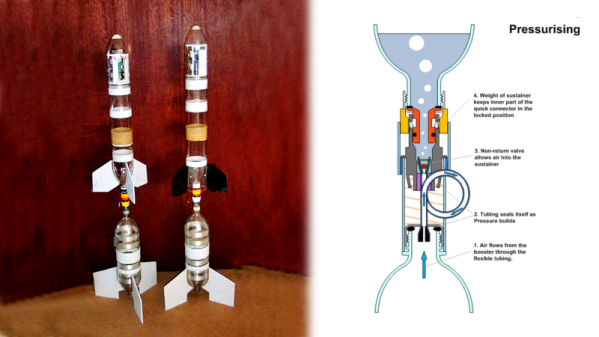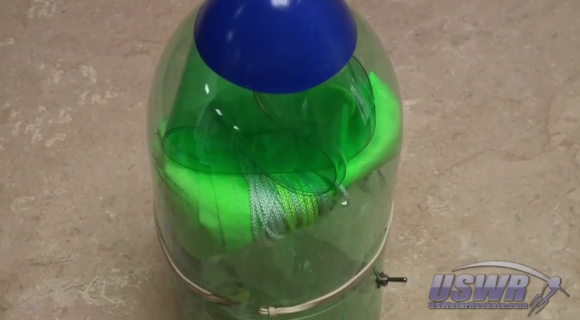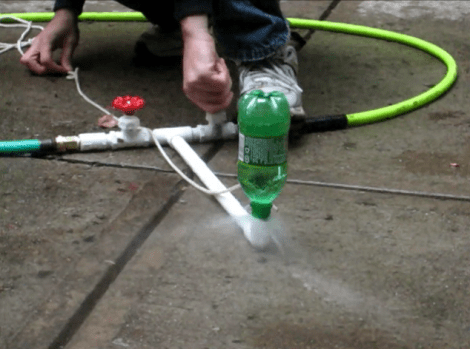When I start off on a “simple” project, experience shows that it’s got about a 10% chance of actually remaining simple. Sometimes it’s because Plan A never works out the way I think it will, due to either naivety or simply the random blockers that always get in the way and need surmounting. But a decent percentage of the time, it’s because something really cool happens along the way. Indeed, my favorite kind of “simple” projects are those that open up your eyes to a new world of possibilities or experiments that, taken together, are nothing like simple anymore.
 Al Williams and I were talking about water rockets on the podcast the other day, and I realized that this was a perfect example of an open-ended simple project. It sounds really easy: you put some water in a soda bottle, pressurize it a bit with air, and then let it go. Water gets pushed down, bottle flies up. Done?
Al Williams and I were talking about water rockets on the podcast the other day, and I realized that this was a perfect example of an open-ended simple project. It sounds really easy: you put some water in a soda bottle, pressurize it a bit with air, and then let it go. Water gets pushed down, bottle flies up. Done?
Oh no! The first step into more sophistication is the aerodynamics. But honestly, if you make something vaguely rocket-shaped with fins, it’ll probably work. Then you probably need a parachute release mechanism. And then some data logging? An accelerometer and barometer? A small video camera? That gets you to the level of [ARRO]’s work that spawned our discussion.
But it wasn’t ten minutes into our discussion that Al had already suggested making the pressure vessel with carbon fiber and doctoring the water mix to make it denser. You’d not be surprised that these and other elaborations have been tried out. Or you could go multi-stage, or vector-thrust, or…
In short, water rockets are one of those “simple” projects. You can get one basically working in a weekend day, and then if you’re so inclined, you could spend an entire summer of weekends chasing down the finer points, building larger and larger tubes, and refining payloads. What’s your favorite “simple” project?


